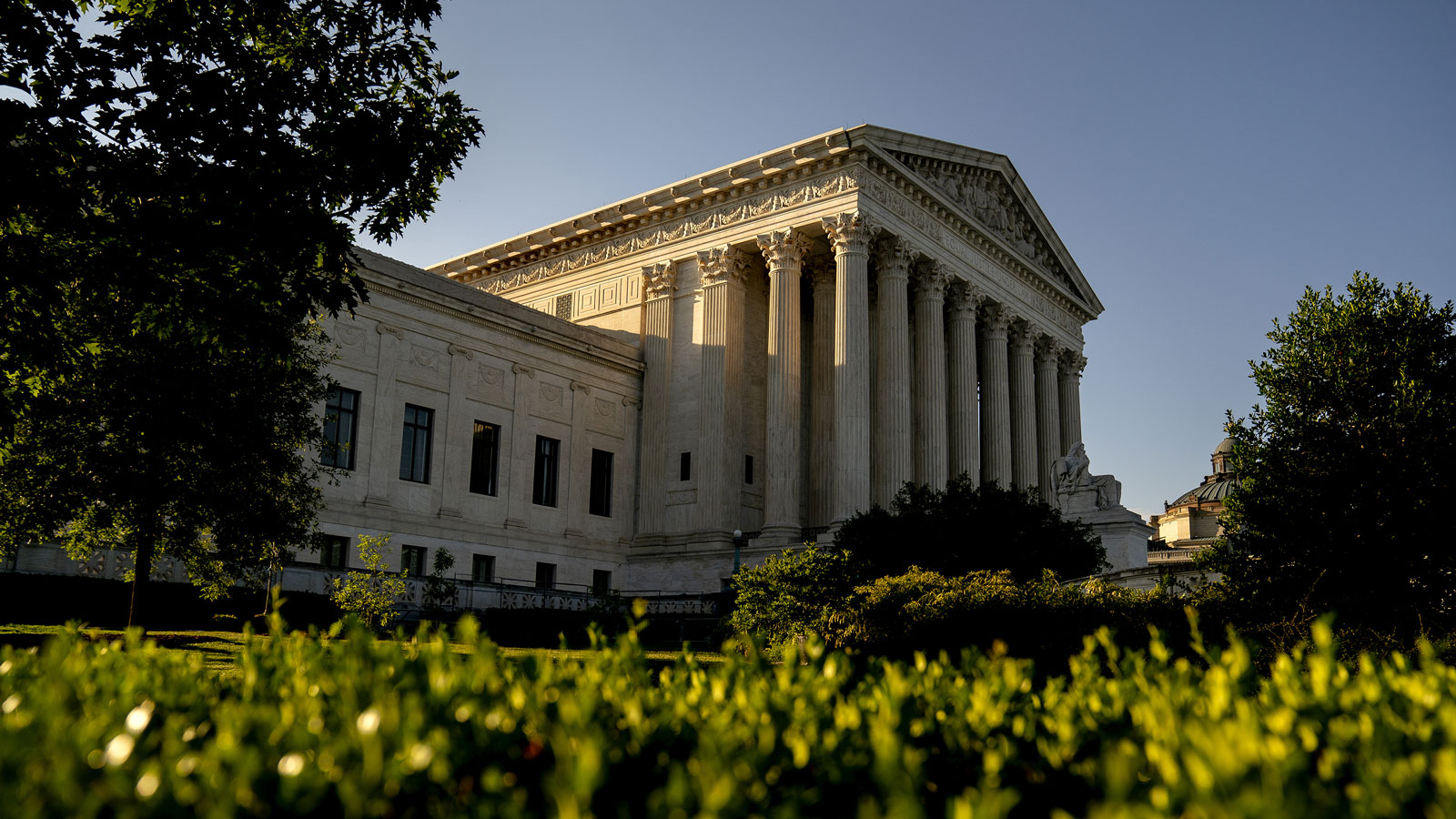Jay Duffy is an attorney with the Clean Air Task Force and was a principal brief-writer in West Virginia v. EPA representing public health and environmental organizations.
Analysts and pundits, myself included, have dissected the recent U.S. Supreme Court decision in West Virginia v. EPA from all angles, and for most environmentalists it represents a frustrating defeat. On behalf of several organizations, the Clean Air Task Force filed the original case opposing the Trump administration’s repeal of the Clean Power Plan. The D.C. Circuit Court of Appeals ruled in our favor but by that time, the Clean Power Plan’s strong emissions targets had already been met so the plan was not reinstated. West Virginia, along with 19 other states and several coal companies, appealed that decision to the Supreme Court. When the high court took up the case last year — against a defunct rule — I was sure environmentalists wouldn’t like the outcome.
For the majority of the justices, the Clean Power Plan represented a transformative expansion of the Environmental Protection Agency’s power over the electric sector that was not authorized by the Clean Air Act. The Supreme Court ultimately decided that although the agency has the power to determine the “best system” to reduce greenhouse gas emissions from coal- and gas-fired plants and to set pollution limits accordingly, that system can’t be based solely on “shifting generation” from fossil fuels to renewables.
This is an obvious blow to those of us who care about the climate crisis and want to see our country move to a zero-carbon electric system. And yet it’s not as bad as you may think.
The historical fact is that for decades, power plant owners have reduced greenhouse gas emissions by shifting power generation away from fossil fuels to cleaner alternatives available on the interconnected grid — not because they’ve been told to, but because it has made the most economic sense (that’s why power plants met the Clean Power Plan targets years early, even though the plan was never in effect). And the U.S. Energy Information Administration expects this trend to continue, forecasting that fossil fuel-fired power generation will decrease from 60 to 44 percent by 2050, and that renewable generation will increase from 21 to 44 percent.
The EPA derives emissions limits from a feasible and cost-effective system of pollution control. For the Clean Power Plan it based limits on a system that shifts energy generation toward renewables. But under the Clean Air Act it is the emissions limit that is binding, not the system. Power plant owners can meet the limit any way they see fit. In fact, when the EPA was crafting the Clean Power Plan during the Obama administration, it considered installing carbon-capture and sequestration equipment or technologies that would burn some natural gas at coal plants. But during the rulemaking process, hundreds of people submitted comments to the EPA asserting that the industry’s preferred method of reducing emissions was to shift away from fossil fuels toward renewable generation, so the agency made this the basis of its Clean Power Plan targets.
The court struck down the Clean Power Plan. But the decision doesn’t stop the EPA from setting emissions limits for power plants. And it leaves the door open for the agency to still base those benchmarks on “efficiency improvements, fuel-switching and add-on controls” — including carbon-capture and storage technologies — that enable the plant to “operate more cleanly,” as the opinion states.
I am the first to acknowledge that carbon capture and storage has its skeptics. But the IPCC and other global climate modeling have emphasized its importance, and recent innovations support its role as a scalable climate solution. Since 2014, the EPA has twice found the technology “adequately demonstrated and cost reasonable” as the basis of emissions limits for power plants under the Clean Air Act. The court’s decision leaves the EPA with a path forward to set stringent emissions limits for fossil fuel-fired power plants based, at least in part, on carbon-capture technologies.
Neither the Clean Air Act nor the Supreme Court decision mandates that power plants adopt a particular pollution-control technology, only that they meet the emissions requirement. So while the West Virginia case certainly narrowed the EPA’s options as to what it can base emissions limits on, it does not prohibit the power sector from retiring fossil fuel infrastructure and shifting power generation to renewables to comply with the limits. And if history is any guide, that’s likely to happen regardless of how the EPA sets standards.
The EPA must now adopt emissions limits based on pollution controls that are installed at the plant and which the courts have repeatedly approved. Even if the industry eventually finds it most economical to transition to cleaner-emitting generation sources, it will still need some conventional power plants to support and fill in the gaps when the sun isn’t shining or the wind isn’t blowing, and we’ll want to minimize the carbon they emit in any way we can.
The Clean Air Act has been successful because it is designed to force innovation. As the D.C. Circuit court said in 1973, “The state of the art has tended to meander along until some sort of regulation took it by the hand and gave it a good pull.” For example, when the country faced acid rain in the 1970s, the EPA developed standards based on sulfur scrubbers, which were nascent at the time — there were only three in operation and one vendor. By the end of the decade, that number had grown to 16, and the cost of the technology fell by half. Most importantly, it worked due to a suite of EPA regulations relying, in part, on scrubbers. Today, 93 percent of sulfur dioxide never reaches the atmosphere.
The White House is committed to an electric grid that by 2030 is powered 80 percent by emissions-free sources. The Supreme Court may have complicated matters, but the EPA still has the authority and responsibility to swiftly set stringent emissions targets rivaling those set by the Clean Power Plan. Where fossil fuel-fired plants exist, they must decide whether to control their carbon to a degree commensurate with the best controls or shift to a cleaner generation source. But there can’t be an option to do nothing.
The views expressed here reflect those of the author.
Fix is committed to publishing a diversity of voices, and we want to hear from you. Got a bold idea, fresh perspective, or insightful news analysis? Send a draft, along with a note about who you are, to opinions@grist.org.




